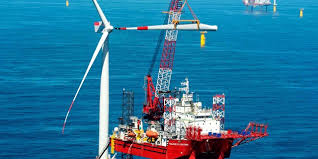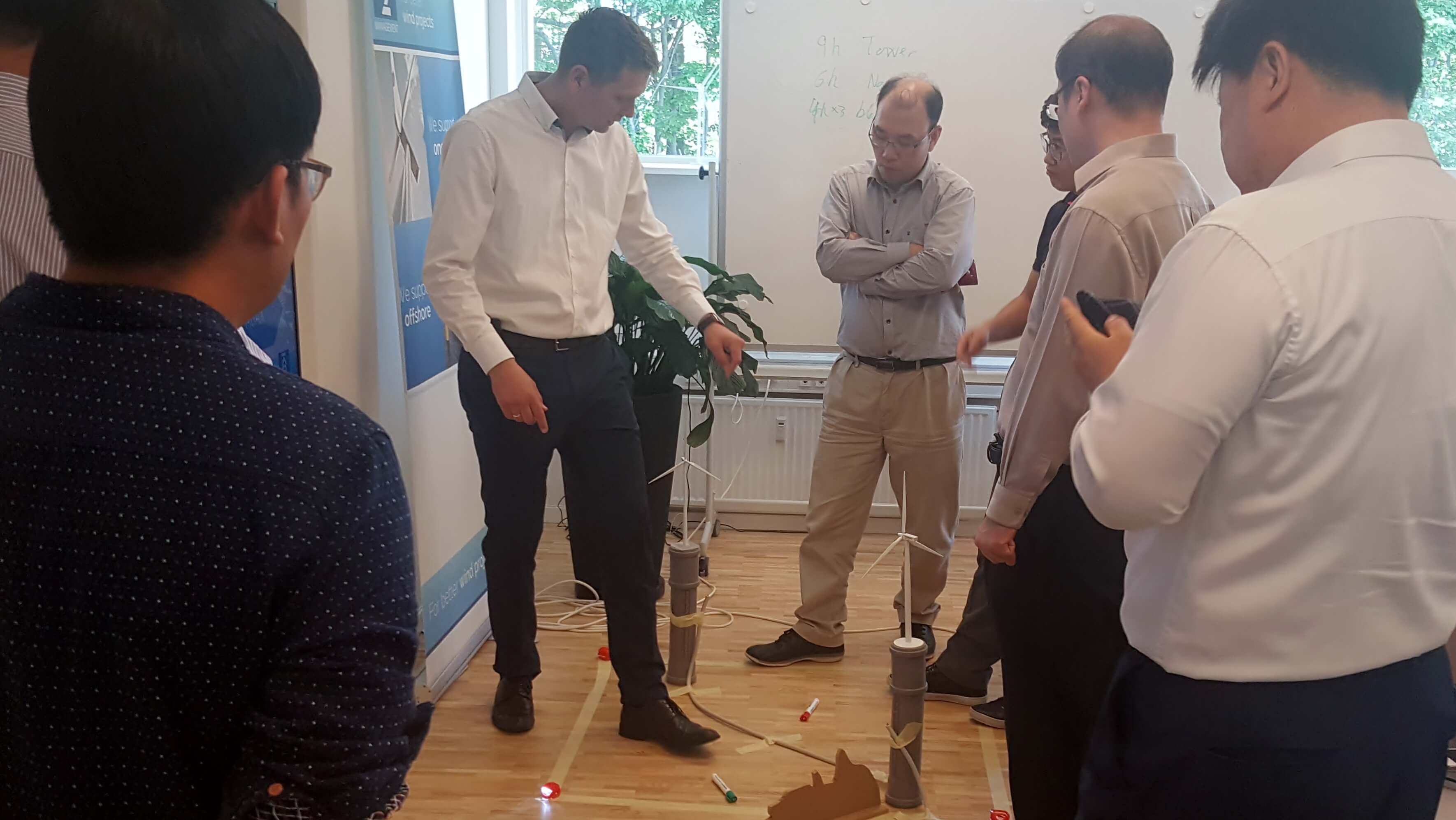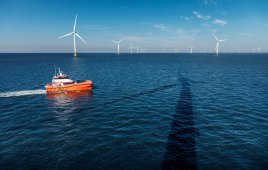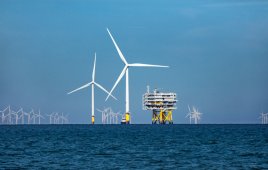By Axel Juhnke, Managing Director, Germany
K2 Management
Would you go to war without properly planning or training for the mission? It is a heavy question, but one that has resulted in a strategy now recognized by military and business leaders alike. It goes a little like this: plan, prepare, and practice, practice, practice.

By performing a set of Rehearsal of Concept drills for a wind project, management teams can review and test ideas prior to implementation to save time, costs, and potential problems.
The strategy used by several armed forces is known as the Rehearsal of Concept exercise, or ROC drills, and its aim is to provide prep work and risk management to those in the field. ROC drills let soldiers and military leaders rehearse battle plans in advance of a mission.
A similar strategy is also gaining momentum in business. Applied to the wind industry, this concept sees all key project stakeholders gather in a “war room” of sorts to plan, prepare, and practice a project’s construction phase as a type of live rehearsal.
Of course, the stakes of a wind project are inconsistent with those of war. However, a cross-industry management approach lets project leaders tap into techniques that are already used successfully in other fields. The aim for the wind industry is to effectively anticipate, mitigate, and manage risks that could affect multi-million (and billion) dollar projects over a lifetime. If implemented successfully, the strategy creates transparency between stakeholders and developers, increases safety measures, and can save project costs.
The dress rehearsal
Project design and planning is predominantly based on assumptions of what may or may not work at a given project site. Certainly, a contractor may have past experience under his or her belt, but each project and site location is different with unique characteristics and challenges.
By performing a set of ROC drills, project teams can review and test the assumptions prior to implementation. A well-run project can save time and costs, and avoid unnecessary snags. For example, imagine a crew and vessels placed on standby during offshore construction because initial timeline plans (the “assumptions”) failed to match reality. It happens, but this is a costly delay that can be avoided with a fine-tuned rehearsal run or ROC drill.
Tue Lippert had a long career history in the Danish Navy before joining DONG Energy. He is now a Senior Project Manager at K2 Management, and makes a good point: “People can easily ‘fall in love’ with their own ideas, so it is crucial to test and challenge the plans and assumptions before ever going live.” This is particularly true with multi-megawatt power projects.
While at DONG Energy (now Orsted), Lippert successfully introduced the ROC drill concept during construction of UK’s Westermost Rough Offshore Wind Farm, a project with a capacity of over 3,000 MW. It was the first offshore wind farm in the world to make commercial use of 6-MW wind turbines with 75 meter-long blades. Over 900 people were involved in the offshore construction of the wind farm.
However, Lippert says ROC drills can be used on all projects. “Whether small, large, on or offshore, the drills can create value for developers and contractors across the entire project execution.”
He adds that once potential risks are identified, it is important to link them with an action. “Then move on to secure the flow in the ROC drill. The aim of ROC drills is not to get lost in problem solving, but to identify risks and critical interfaces to enable project teams to turn assumptions into facts.”
To provide an analogy, Lippert suggests imagining musicians from an orchestra practicing solo until performance night. “Developing a wind project without ROC drills is like asking an orchestra to rehearse every instrument and voice in solitude. Then, on the opening night of a concert, the orchestra is expected to come together for the first time and play Beethoven’s Symphony No. 9 together — flawlessly.”
The performance
ROC drills for each project differ and are based on the wind developer’s needs, and the project goals and challenges. To begin, specialists and project managers from each department meet in a war room of sorts, with a large map of the wind site and models that represent key equipment and structures (such as the substations, wind turbines, and vessels). This provides visuals for the construction process.
Project managers then explain their role and plan for the project, with input from an independent technical advisor, to determine an ideal course of action (based on the project goals of other departments who are also working on the site). This allows managers, say of the vessel operators to interact with those of the turbine installers, who then may interact with the safety manager, and so on. Together, the full project team rehearses the project execution from start to finish.

ROC at work. A K2 Management Rehearsal Of Concept (ROC) drill takes place between the project managers and development team of the Jeonnam offshore project in South Korea.
“There are always several unexpected findings, and often more than 100 critical considerations that come up during ROC drills for a wind project,” says Lippert. In fact, of the projects that K2 Management has conducted ROC drills on, each project alone has saved hundreds of thousands of Euros and untold amounts of time by using this assumptions-testing process.
Practice can make perfect, and rehearsal drills may ensure each step of a project goes off without a hitch. However, it is important to prepare for the unexpected. Imagine a boxer in a championship battle who refuses to change his fight plan or adapt his next move based on his opponent’s activity. There are times when a change in game plan is the best course of action, and it is essential to roll with the punches for success.
The same theory holds true for wind projects that encounter unexpected challenges. In the complex, deadline-driven world of wind, flexible project management is key. In fact, the agile management methodology is a form of project management that ensures flexibility through an iterative, incremental method. It anticipates and expects changes in plans because of the variable nature of people and complex projects.
The MoSCoW method (must have, should have, could have, won’t have, and yes, pronounced like Moscow) is commonly used in business to prioritize courses of action based on changing circumstances. It is a useful method that can be applied at various project stages, used to decide which requirements to complete first, which can wait, and which to exclude.
A smart yet flexible approach to project management continually evaluates progress, expectations (i.e. costs and deadlines), and adjusts plans accordingly.
The big picture
While changes are sometimes inevitable, it is important to keep the end goal in mind. A management concept that originates from the defense industry, called systems engineering (sometimes referred to as systems thinking), can help keep track of the big picture. It accounts for the parts of a system, by examining the linkages and interactions between the components, but within the whole.
With systems engineering, the overall system is just as important as its individual parts. A broad-spectrum view is important to increase efficiencies between parts or departments, and potentially save costs.
So while it is critical to break down (and even practice) the steps that lead to project’s completion, systems engineering maintains that it is just as valuable to account for the interactions between the steps. For a wind project, developers must ensure that a turbine’s foundation meets its tower specs, and that turbines are placed in the ideal spot in relation to one another to account for the wave effect, and so on. Each construction step affects the next stage. As such, seemingly minor changes (a one-day delay in tower delivery, for example) can throw off an entire project timeline.
A project manager using a systems engineering approach can manage unavoidable delays, and schedule or reschedule tasks to save costs because he or she sees the big picture.
The wind industry is one full of innovation, new and exciting technology and modern techniques, all of which are to be expected in such a relatively new sector. However, sometimes reinventing the wheel isn’t worthwhile, and when risk management outcomes can mean the difference between a profitable project or one rife with issues and costly challenges, looking to other industries for successful risk management techniques can provide a framework for success in wind projects of the future.
Filed Under: News, O&M, Offshore wind, Projects



